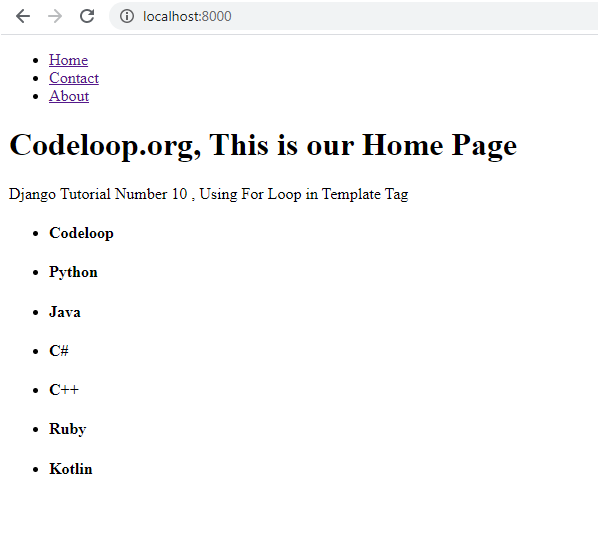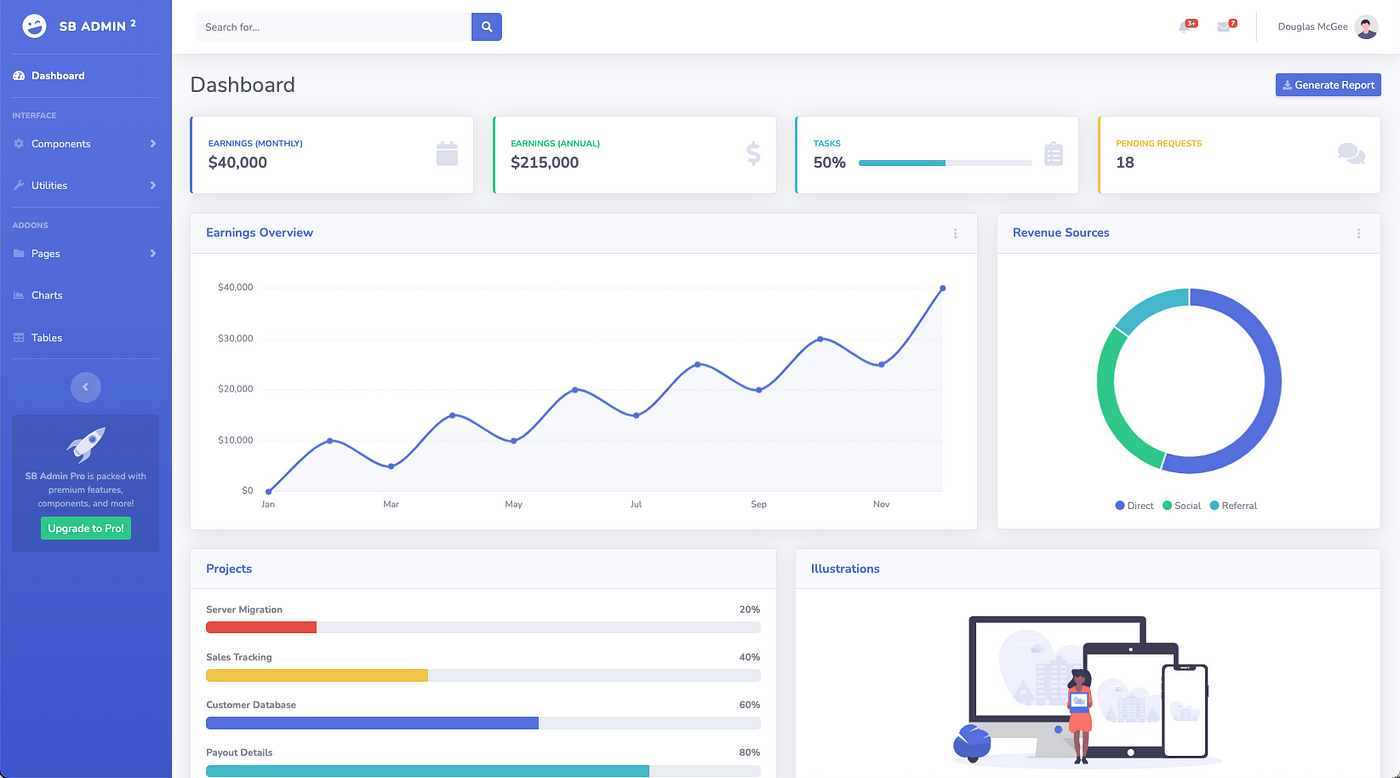Django Template Loop
Django Template Loop - Web 16 technically it should iterate from 0 to rangelength outputting the user name of the c [i] [0].from_user.but from looking at example online, they seem to replace. For loop is used to iterate over any iterable object, accessing one item at a time and making it available. Templates are files, much like regular. 189 model._meta.get_all_field_names () will give you all the model's field names, then you can use model._meta.get_field () to work your way. They allow for granular control of translations, formatting, and time zone. {% for item in items %} { { item }} {% endfor %} in the above example, the for loop is iterating over a list. Web django template for loop. {% for item in item_list. In template, you can do: [ product_type_1, [ product_1, product_2 ], product_type_2, [.
Web django provides template tags and filters to control each aspect of internationalization in templates. In template, you can do: For loop is used to iterate over any iterable object, accessing one item at a time and making it available. 189 model._meta.get_all_field_names () will give you all the model's field names, then you can use model._meta.get_field () to work your way. {% for x in mymembers %} { { x.firstname }} {% endfor %}. Web loop through the items of a list: {% for item in item_list. This tag helps to loop over the items in the given. Web demo of the code used below: You can find the “ for loop ” syntax below.
{% for x in mymembers %} { { x.firstname }} {% endfor %}. Web django provides it. Web 16 technically it should iterate from 0 to rangelength outputting the user name of the c [i] [0].from_user.but from looking at example online, they seem to replace. Web django for loop in template to create and use for loop in django, we generally use the “ for ” template tag. {% for item in item_list. Web below is the general syntax of for loop template in django: Web now we can use the data in the template: Templates are files, much like regular. {% for x in cars %} { {. This tag helps to loop over the items in the given.
Django Templates part3 YouTube
You can find the “ for loop ” syntax below. {% for i in list %} {% endfor %} each line of code is enclosed between {%.%} these. { { forloop.counter0 }} index starts at 0. Web loop through the items of a list: 189 model._meta.get_all_field_names () will give you all the model's field names, then you can use model._meta.get_field.
Django Template For Loop / Django Templates Learn To Create Your First
{% for x in mymembers %} { { x.firstname }} {% endfor %}. {% for item in item_list. Web django for loop in template to create and use for loop in django, we generally use the “ for ” template tag. For loop is used to iterate over any iterable object, accessing one item at a time and making it.
Django Template Black Dashboard
Some constructs are recognized and interpreted by the template. Web loop through the items of a list: Web for more information about conditional operators see: Web below is the general syntax of for loop template in django: In template, you can do:
Django Template For Loop / Django Templates Learn To Create Your First
Web 24 answers sorted by: {% for x in mymembers %} { { x.firstname }} {% endfor %}. [ product_type_1, [ product_1, product_2 ], product_type_2, [. {% for item in items %} { { item }} {% endfor %} in the above example, the for loop is iterating over a list. For loop is used to iterate over any iterable.
How to Use For Loop in Django Template Codeloop
Web below is the basic syntax of a for loop in a django template: Some constructs are recognized and interpreted by the template. Web loop through the items of a list: {% for i in list %} {% endfor %} each line of code is enclosed between {%.%} these. Web i am trying to figure out the best way to.
Try DJANGO Tutorial 18 For Loop in a Template YouTube
You can find the “ for loop ” syntax below. For loop is used to iterate over any iterable object, accessing one item at a time and making it available. [ product_type_1, [ product_1, product_2 ], product_type_2, [. This tag helps to loop over the items in the given. Web django provides it.
Django Template For Loop / Django Templates Learn To Create Your First
Web loop through the items of a list: Web 24 answers sorted by: In template, you can do: They allow for granular control of translations, formatting, and time zone. { { forloop.counter }} index starts at 1.
Save Time With this Django Template Bootstrap Admin by Timur
Web for more information about conditional operators see: { { forloop.counter0 }} index starts at 0. Web django for loop in template to create and use for loop in django, we generally use the “ for ” template tag. {% for x in fruits %} { { x }} {% endfor %} run example » example loop through a list.
Django Template For Loop python How to change django wagtail's
Web django template for loop. Web now we can use the data in the template: Web django for loop in template to create and use for loop in django, we generally use the “ for ” template tag. Web below is the basic syntax of a for loop in a django template: In template, you can do:
They Allow For Granular Control Of Translations, Formatting, And Time Zone.
Web loop through the items of a list: Web i am trying to figure out the best way to loop a given number of times within a django template from an integer field. Web for more information about conditional operators see: Web django for loop in template to create and use for loop in django, we generally use the “ for ” template tag.
{% For I In List %} {% Endfor %} Each Line Of Code Is Enclosed Between {%.%} These.
You can find the “ for loop ” syntax below. Templates are files, much like regular. { { forloop.counter0 }} index starts at 0. I need to render block of html code 5 times in template file.
Web 24 Answers Sorted By:
Web below is the general syntax of for loop template in django: Web django provides it. In template, you can do: For loop is used to iterate over any iterable object, accessing one item at a time and making it available.
Some Constructs Are Recognized And Interpreted By The Template.
Web 16 technically it should iterate from 0 to rangelength outputting the user name of the c [i] [0].from_user.but from looking at example online, they seem to replace. Web below is the basic syntax of a for loop in a django template: Web django provides template tags and filters to control each aspect of internationalization in templates. [ product_type_1, [ product_1, product_2 ], product_type_2, [.








